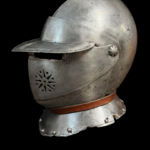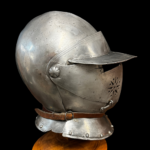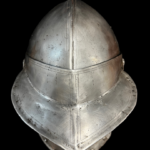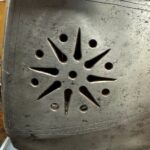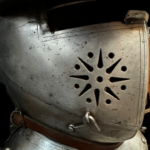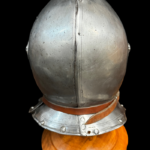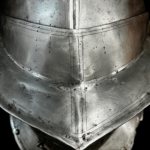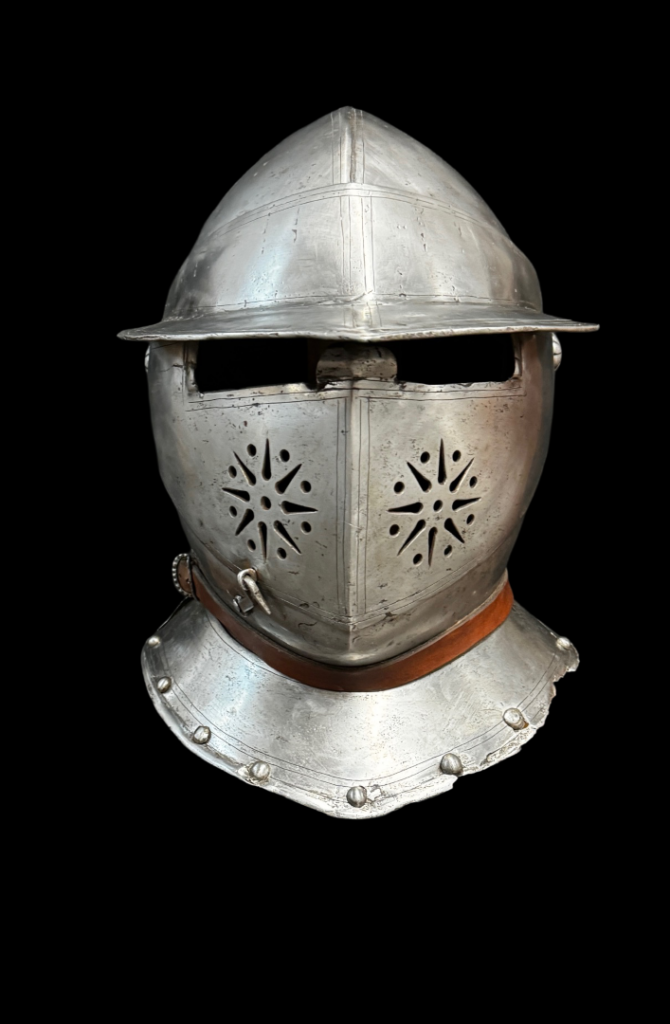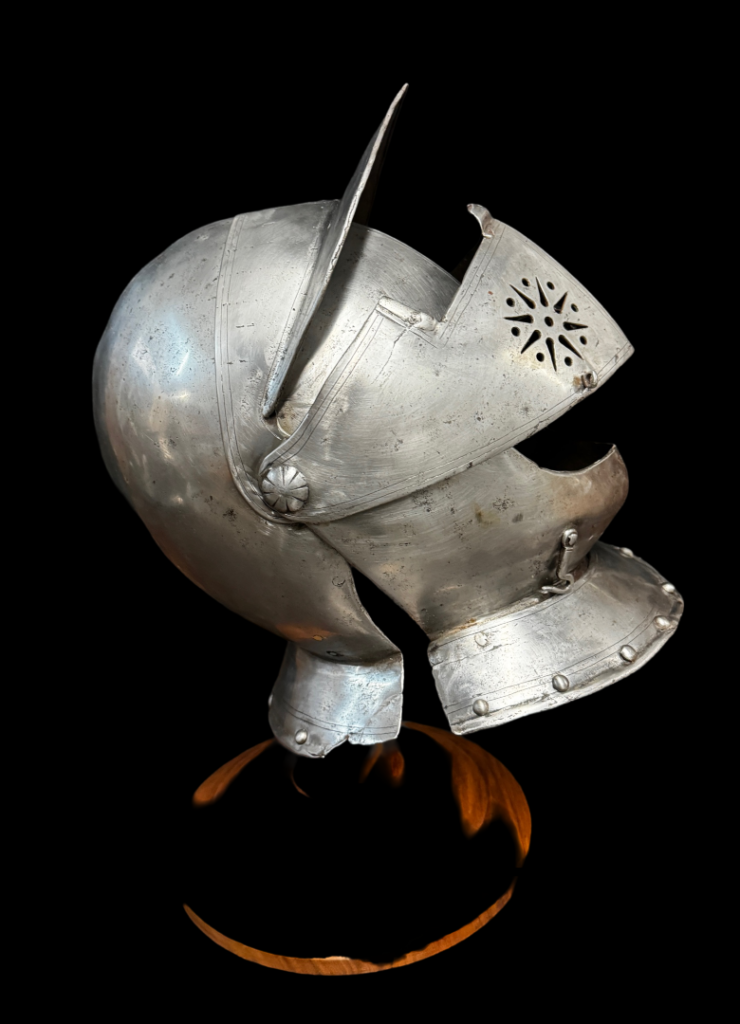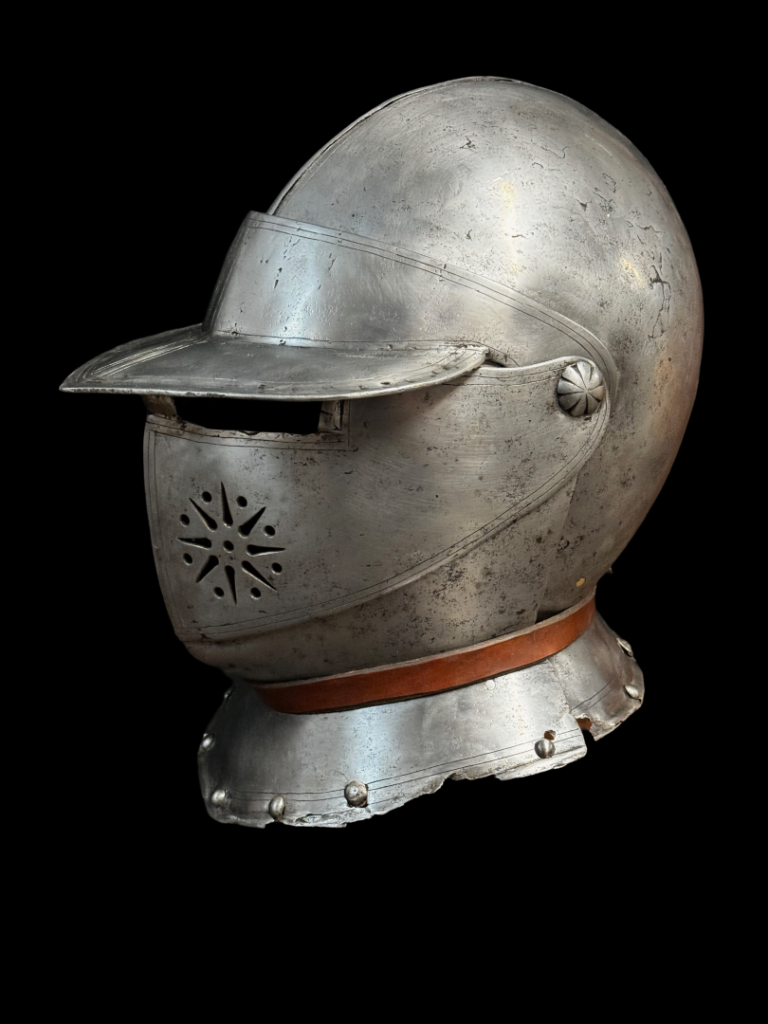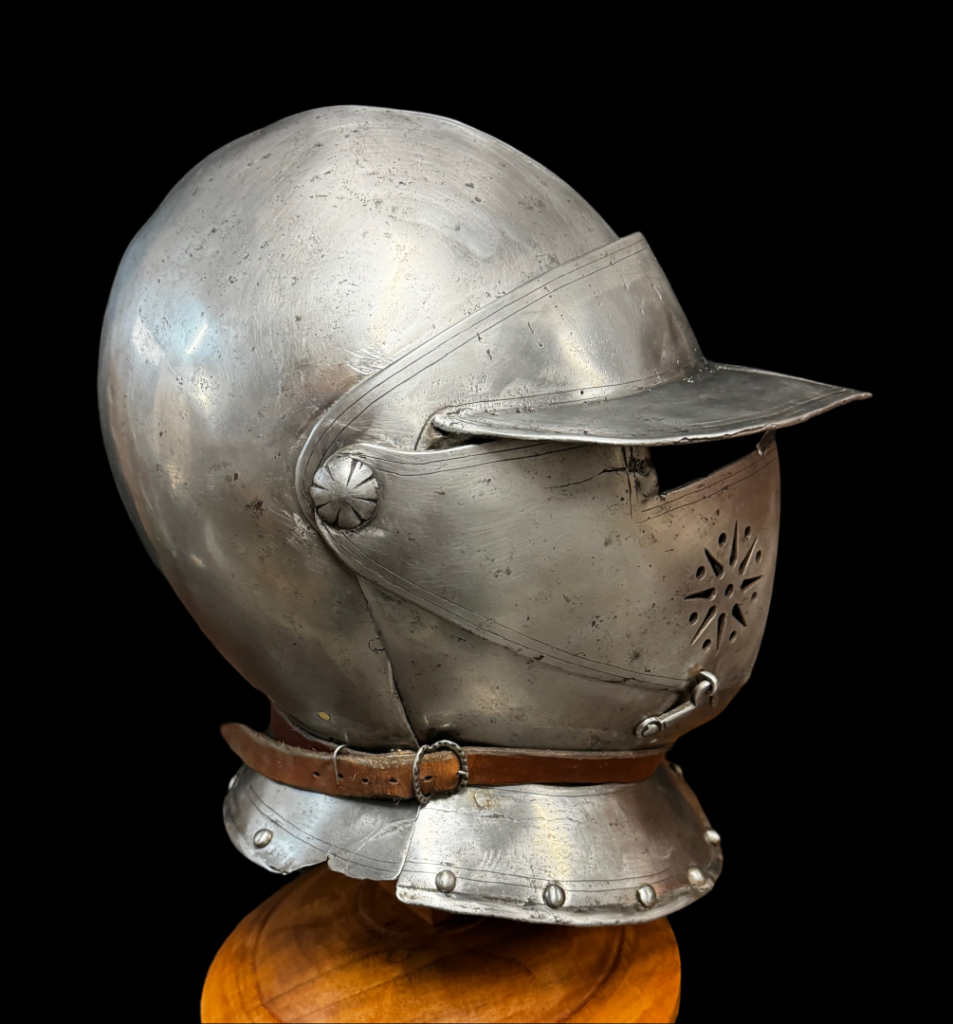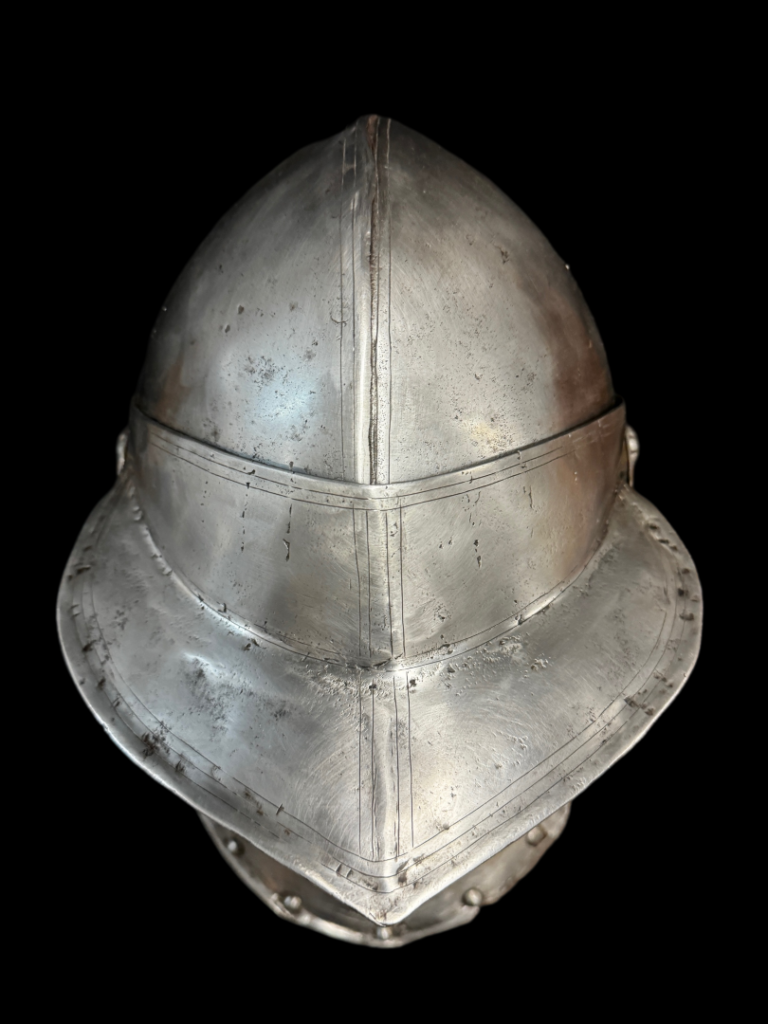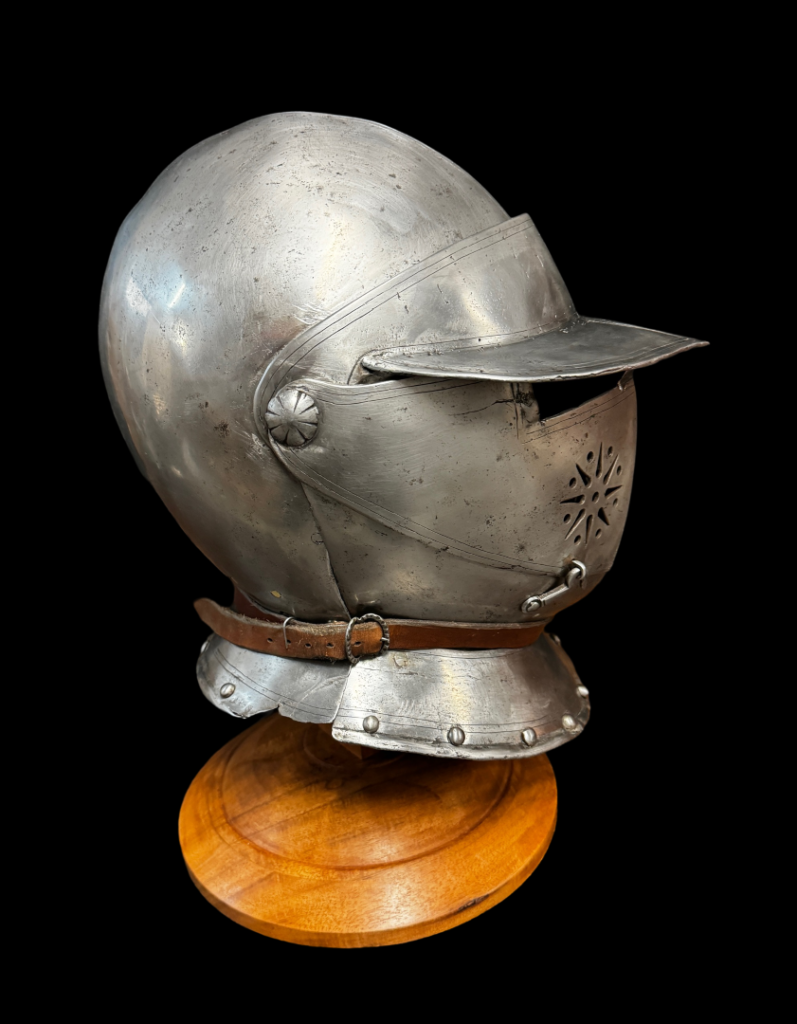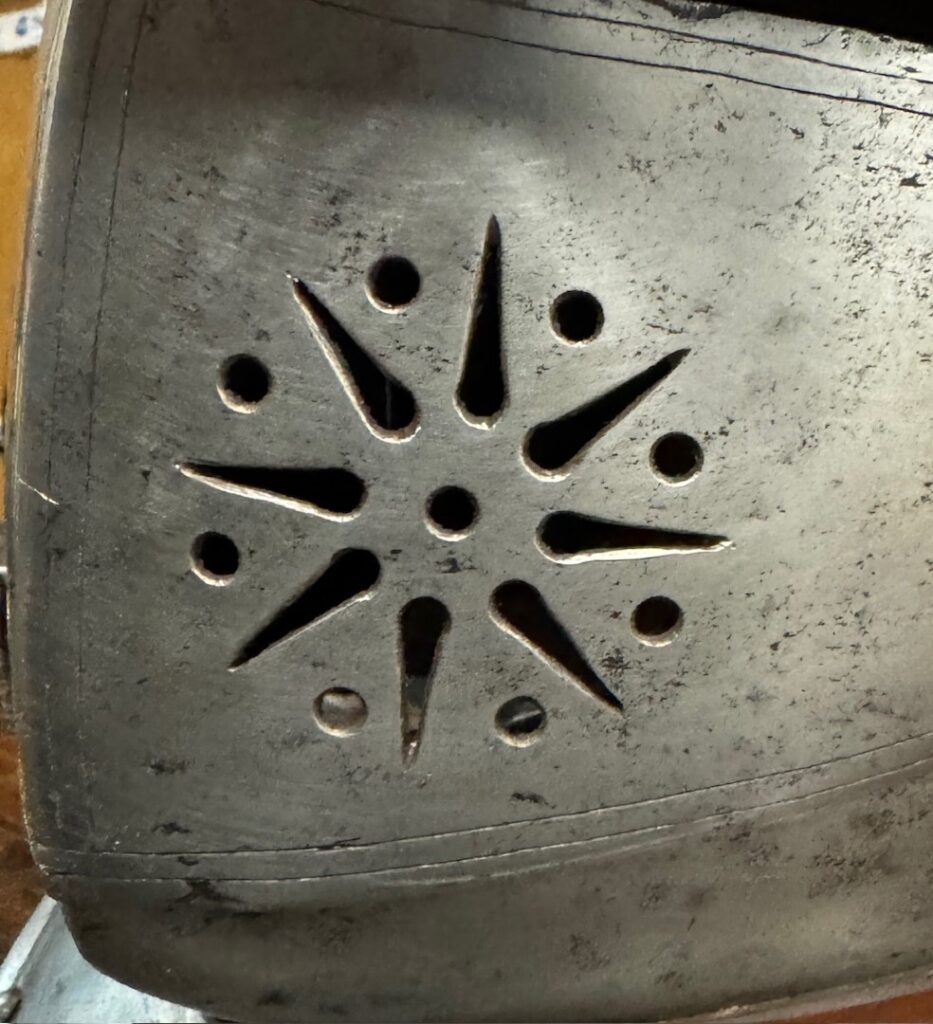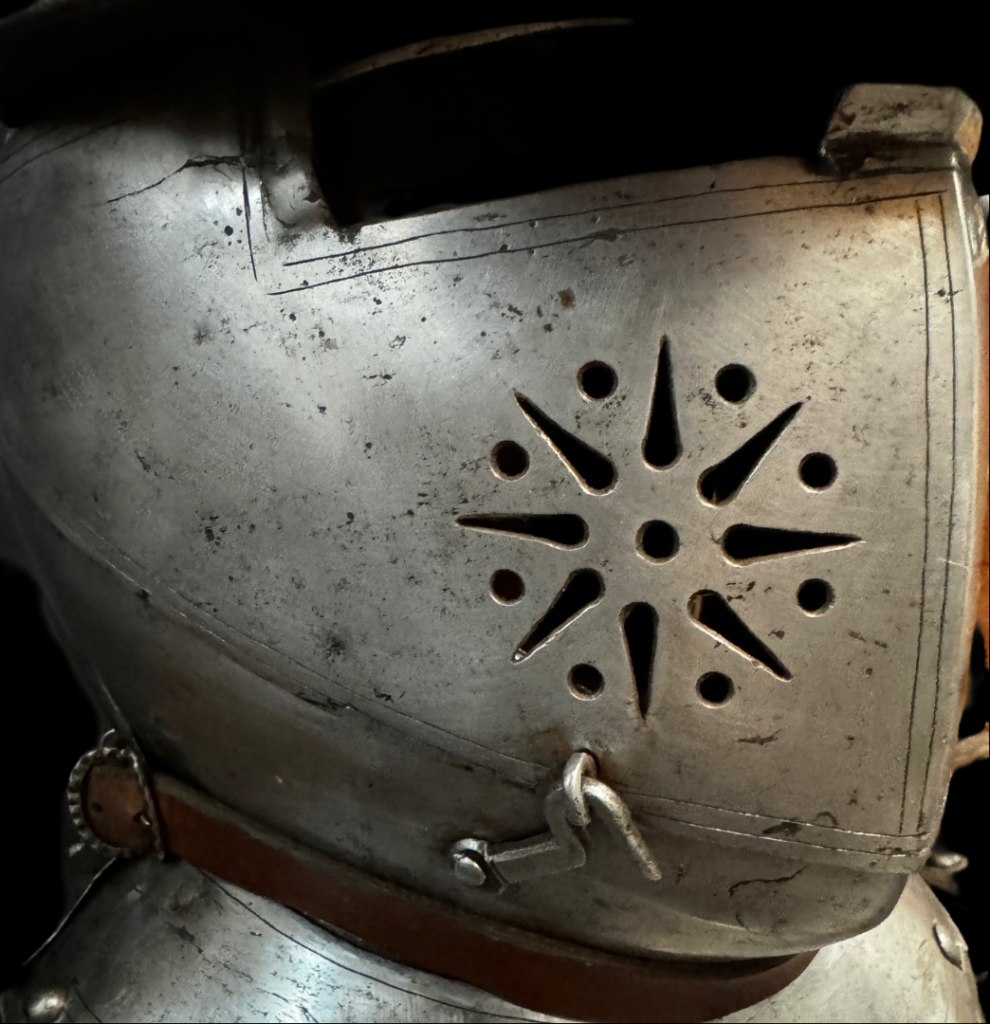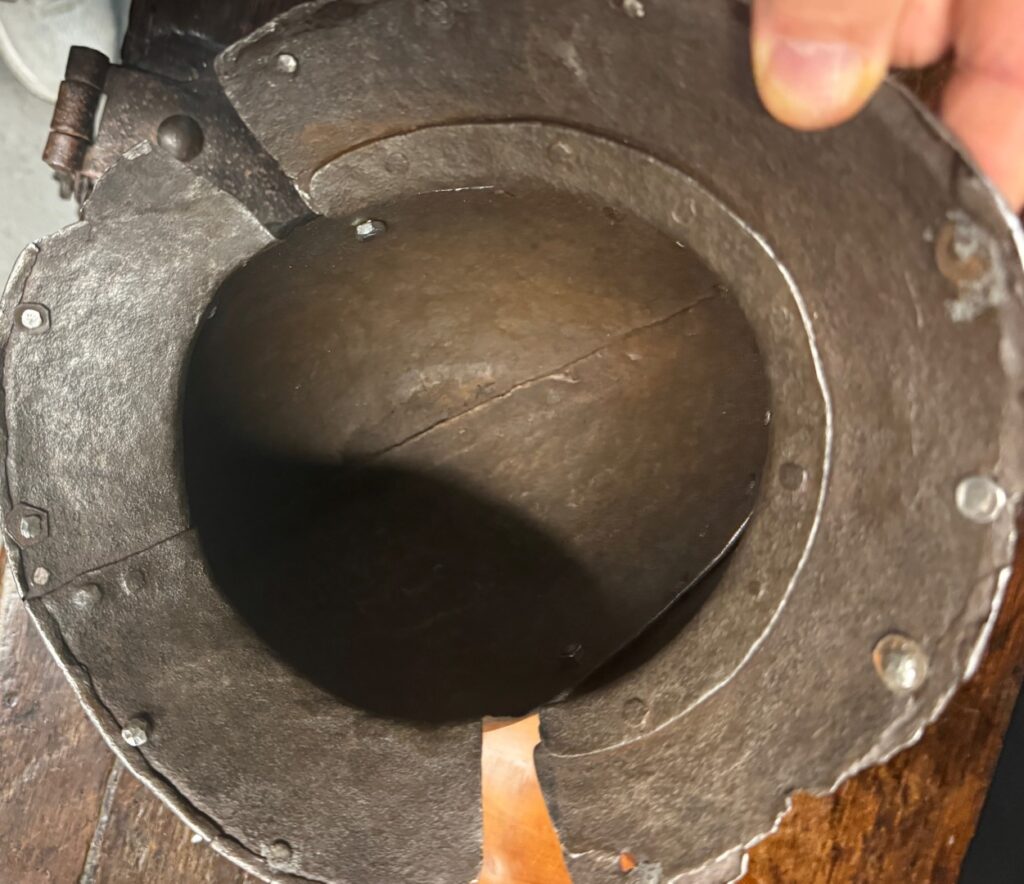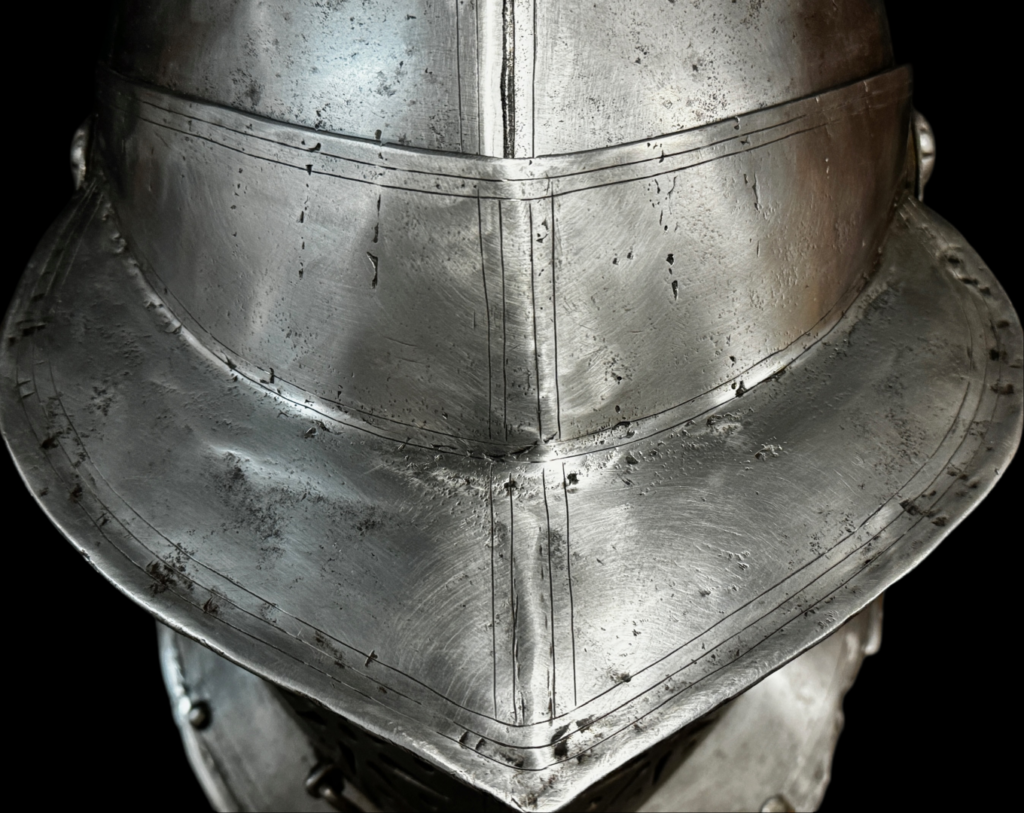1786) DECORATED GERMAN CUIRASSIER HELMET CIRCA 1600-10: Superb German construction, exceptional elegance, and remarkable condition. Put it on your desk, shelf, or fireplace, and watch the expression on people’s faces and the questions they ask. Helmets like these seldom come this nice or are priced under $6K!!!
Introduction: Even a person who knows very little about Arms and Armor will recognize an armored helmet and understand its historical value, artistic beauty , and engineering genius. Helmets make a statement of chivalry, power, and elegance. Like a fine statue, they display well on flat tops such as shelves, fireplaces, tables, or desks. Cuirassier helmets circa 1600–1620 are a great value. They look similar to late 16th-century close helmets but for less than half the cost , and very few people will know the difference!
Discussion: Helmets were the earliest form of body armor used by both aristocratic knights and simple infantrymen. They are the most difficult item for a master armorer to make. They are more expensive than any other part of a full suit of armor. Since they have several moving parts, many have not survived with all their original parts intact, like the example under discussion has.
The cuirassier helmet evolved circa 1600. It was an evolution of the close helmet and the burgonet. Either of these two characteristics qualifies as a cuirassier helmet:
(A) does not have an upper bevor.
(B) It has a less obtrusive flat visor that pivots on the side of the skull.
Warfare began to change drastically in Europe around 1550. Changes were mandated to compensate for a better-organized and faster style of warfare. The cuirassier helmet was the next development of the close helmet because it was easier to shoot a gun, fight, and ride a horse from.
During the late 1500s and early 1600s, cavalry consisted of a three-quarter armor with a cuirassier helmet (such as the one under discussion) and knee-length tassets. Greaves and sabatons were replaced with leather boots. From 1620 onwards, they were referred to as cuirassier after discarding their lances. The Germans continued manufacturing cuirassier armor much longer than England and other parts of Europe until circa 1650. The cuirassier was active as early as the English Civil War and in the Thirty Years’ War. By circa 1620, defensive armor changed to the mere armor a harquebusier would wear.
All my items come with the following:
–Free shipping.
–10-day review period.
–Certificate of Authenticity.
– Free autographed copy of my book if you do not have one.
– In the event of an international shipment, we will help assign the lowest correct Customs tariff so you pay the least as little as 5% or even nothing.
I believe you will be very pleased. ACT-NOW!!!*



